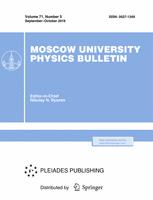В настоящее время не до конца получил свое объяснение значимый эффект расширения фронтовой области интенсивных нелинейных акустических волн, создаваемых в атмосфере импульсными точечными источниками различной природы – регистрируемая ширина фронтовой области на несколько порядка больше, чем это следует из теоретических представлений. Для объяснения столь значимого эффекта выдвинута гипотеза о возможности развития неустойчивости Кельвина-Гельмгольца внутри фронтовой области волны при сдвиговом течении, вызванным градиентом массовой скорости в самой фронтовой области. В работе обосновывается выдвинутая гипотеза. Для этого выполняется прямое (без использования каких-либо полуэмпирических моделей) численное моделирование неустойчивости Кельвина-Гельмгольца внутри физически бесконечно малого объема воздуха во фронтовой области интенсивной нелинейной акустической волны. Рассматривается однородное плоское движение сжимаемого воздуха в волне. Впервые показано, что развитие неустойчивости Кельвина-Гельмгольца на различных расстояниях от источника должно обладать геометрическим подобием ввиду того, что процесс развивается в идеальной среде. При этом не важно, увеличивается ширина фронтовой области по мере удалении волны от источника или она увеличивается за счет роста его энергии.
47.11.-j Computational methods in fluid dynamics
47.20.Ft Instability of shear flows
47.27.E- Turbulence simulation and modeling
$^1$undefined\
$^2$Московский государственный университет имени М.В. Ломоносова, физический факультет, кафедра физики атмосферы



